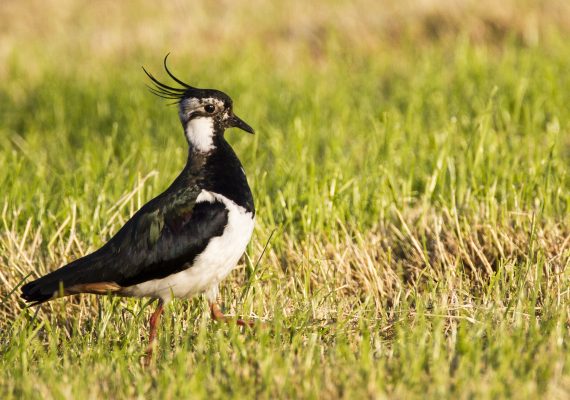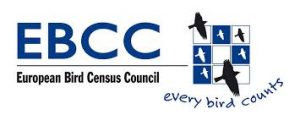Trends of the breeding waterbird populations in Europe based on PECBMS data
December 2, 2020
The first population-level trend analysis using breeding bird data from the Pan-European Common Bird Monitoring Scheme has been produced by Wetlands International and the national PECBMS coordinators.

The Northern Lapwing Vanellus vanellus is one of the species declining across Europe. Photo by Szabolcs Nagy.
The new report Trends of breeding waterbird populations in Europe based on the Pan-European Common Bird Monitoring Scheme data, 2020 covers 31 populations of 24 waterbird species listed in Table 1 of the Agreement on the Conservation of African-Eurasian Migratory Waterbirds (AEWA) and will be used as one of the inputs in the 8th edition of the AEWA Conservation Status Report.
In every three years, the Conservation Status Report for the Agreement on the Conservation of
African-Eurasian Migratory Waterbirds (AEWA) assesses the sizes and trends of the populations
listed in Table 1 in Annex 3 of the Agreement. Based on this assessment, the Meeting of the Parties
amends the classification in Table 1.
Producing this special report was necessary to produce trends that reflect more closely the AEWA
criteria to classify populations in Table 1, namely: (i) separate trends for each population, (ii) the
long-term trend covers 10 years or 3 generations, whichever one is the longer.
Each of the 31 population accounts contains the following information:
• Trend graph: annual indices with standard error (SE).
• Trend table: presenting the time periods, multiplicative population growth rates and
standard errors (SE) for the log-linear overall, long- and short-term trends as well as the
assessment of each trend following the standard classifications(Soldaat, Visser, van
Roomen, & van Strien, 2007).
• Generation length applied for the population.
• List of countries included in the trend calculations.
• Map showing the countries allocated to the breeding range of the flyway population (grey
shading), countries where data was used in the analysis (red)1.
• Comments concerning the representativity of the calculated trend for the population as a
whole.
• It is also highlighted if the population decline has exceeded the threshold for long-term
decline (i.e. >10% over 3 generations) or rapid short-term decline (i.e. a rate of decline in
the last 10 years that is equivalent to >30% decline over 3 generations).
Download the report here.
Acknowledgments
Our special thanks to all volunteers participating in the national monitoring schemes contributing
to the PECBMS.
Wetlands International gratefully acknowledges the financial contribution of the Swiss Federal
Office to the Environment, the Norwegian Environmental Protection Agency and the Croatian
Ministry of Environmental Protection and Energy to the 8th edition of the AEWA Conservation Status
Report through the UNEP-AEWA Secretariat.


